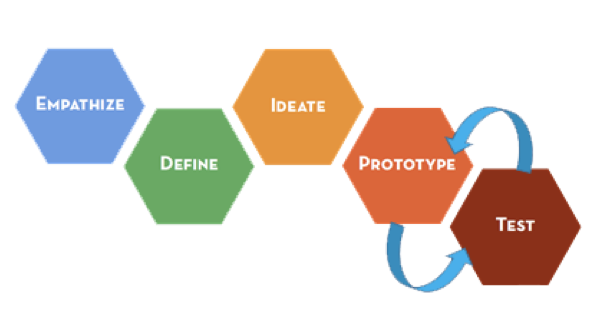This is the seventh post of Dr. Michael Murray’s 10-part series on Innovation, and in it he alerts us:
The Hard Work is About to Begin.
In the innovation process, Dr. Murray has described so far, he has led us through a series of steps that entail many creative steps. In this post, he leads us into prototyping and testing. It’s a step that can lead to the thrill of innovative breakthrough or the heartbreak of needing to find an alternate solution.
______________

Empathizing, defining challenges, brainstorming, drawing ideas, and creating a solution intention…how fascinating and fun! Well, things are about to get more difficult, because they are about to get more real! It’s time to turn these ideas and intention into an actual solution to try and create a prototype to test the viability of your solution. Of course, this can be fun too, but it can also create stress and its associated behaviors. Here are some tips to make turning ideas into a solution a little easier.
First, it’s easy to get overwhelmed, so break the solution down into its key components. These are the operational elements that are essential for the solution to work.
- What happens?
- What people?
- What resources?
- What process?
- What design?
- What technology and equipment?
- What else?
When considering these key components, determine how each interacts with the intended user of the solution and with each other. Next prioritize these components based on their importance and uncertainty. The component that is most important for the solution to be viable and also most uncertain is the one that is most likely to derail your solution, so focus on that first. There’s no reason to spend resource on the other components until you figure out this one.
This is where rapid prototyping comes in. The rationale and methods for rapid prototyping are described in detail by Eric Ries in his book The Lean Startup, in which he refers to a prototype as a minimum viable product (MVP). An MVP is that which is necessary to test a key component of a solution with the least investment (including time) possible, allowing the intended users to experience the solution and provide feedback. The desired outcome is to learn what will improve your solution and to make adjustments quickly and test again. Additional examples of developing and testing prototypes are described in Jake Knapp’s book Sprint.
What you are really testing with a prototype is the user’s experience with your solution. At the core of that experience is the feeling they get when interacting with your prototype, because that will determine the value that they attach to it. Importantly, people often cannot or will not tell you how they feel when they interact with your prototype, so pay close attention to their body language and voice inflections as they interact with it. One great indicator of engagement is when someone tries to modify the prototype or suggests ways to improve it. Also, be aware of the “kiss of death” endorsement! “This would be great for (someone else), or as a gift”. They may tell you it’s a cool idea, but that does not mean that it will be valuable for them. Remember, innovation is about creating value, and value is based on what people are willing to give in exchange.
Creating a working prototype can be challenging, if you are not used to doing it. There is always the tendency to want to make it almost perfect, because we want to be judged favorably. Here’s what I have done to manage my own perfectionist tendencies. I have taken on the mindset that anything new that I do is a prototype. This attitude has allowed me to try things, get feedback, and not take it personally (usually!). My primary objective is to try something that I believe will provide value and learn from what people do with it. Developing a website for my new coaching business will be my next opportunity. By focusing on what I can learn to refine and improve something, it frees me to try even more things!
______________
To read Dr. Murray’s previous posts on innovation, see the links below:
July 12, 2017: Innovation: What is it really?
August 8, 2017: Innovators: Who are they?
September 13, 2017: Innovation: How to do it (Part 1)
October 11, 2017: Innovation: How to do it (Part 2)
November 8, 2017: Innovation: How Empathizing Saved the Day
December 13, 2017: Innovation: How to do it (Part 3)
______________
This post was written by Mike Murray, DVM, MS, Dipl. ACVIM, CPC. Dr. Murray is an innovation expert and a guest blogger on our site. He is a veterinarian, life and leadership coach, and certified trainer for Managing Innovation™. Mike has just launched Level 5 Coaching and Consulting LLC to work with individuals and teams ready to stretch themselves and be even more successful innovators.


